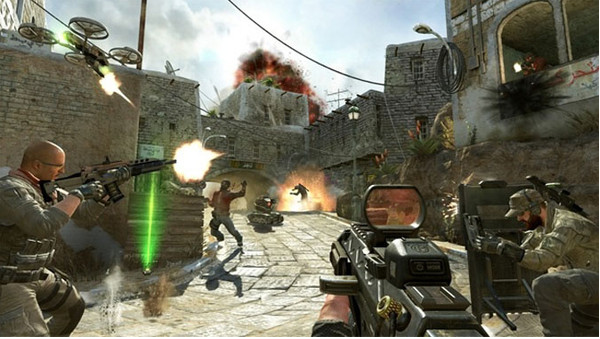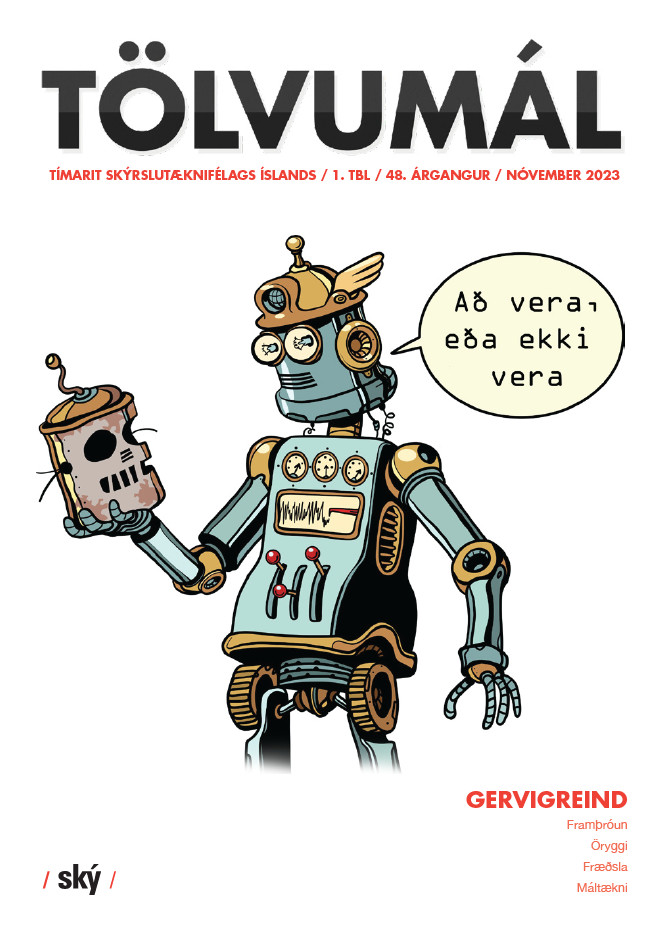
Computing the Game: From Playing to Praying and Back
 In the last article we have seen that the human culture manages the contact with new experiences (including new technologies) by protecting the individual with safe environments, both physical and symbolical. In this article we will see that the main frameworks for the symbolical environments are the rites and the games.
In the last article we have seen that the human culture manages the contact with new experiences (including new technologies) by protecting the individual with safe environments, both physical and symbolical. In this article we will see that the main frameworks for the symbolical environments are the rites and the games.
The augmented reality proposed by Sony with the recent Wonderbook [1] visually puts the player in direct contact with the objects of the game, seemingly upsetting the traditional magic circle [2] which separates games from reality.
But, as we have seen before, the spacetime of games and rites is safe exactly because it is separated from daily reality. So, why does the illusion of reality, even present in many first person shooters like Call of Duty [3], not break the magic circle?
In order to answer this question, we will focus on the relation between reality and fiction (in a next article) and (in this article) on the nature of the magic circle which separates them.


The philosophical discipline named social ontology shows that the magic circle of games (and of rites) is a symbolic boundary [4]. The difference between physical and symbolic boundaries can be well explained using some examples from the epistemology of geography: the sea surrounding an island is a physical boundary, which human interpretation can only recognize, whereas the squared national frontiers of Wyoming are symbolic boundaries directly constituted by human interpretation [5]. Obviously a physical boundary can be used as a symbolic boundary, and conversely a symbolic boundary can be represented by a physical one.
Games and rites are parted from the ordinary reality by means of a symbolic boundary, often implemented by a physical boundary. For example, the painted lines on the ground of a soccer field, or the stones near a holy place like Stonehenge, are physical boundaries, which refer to a symbolic one. So in the case of soccer fields and holy places the physical boundaries enable to recognize a constituted boundary.
Games and rites share many objects (like coliseums, cups, dolls, labyrinths, but even cards, dice, chessboards), many activities (races, challenges, bids, performances, dances, enigmas), and a certain focus on the importance of things and behaviors which normally are considered as irrelevant but in rites and games take on meaning. One cannot avoid notice that the already classical categories used by Roger Caillois to classify games could be applied to rites too [6]. Agon is the class of games which include competition like chess, but we can apply it even to rites like Olympiads (ancient/religious and modern/laic). Similarly, Alea is the class of games which focus on bidding like roulette, but even of rites like ordeals; Mimicry is the class of games where the players perform situations like the “once upon a time I was a prince and you a princess”, but even of rites like processions; and finally, Ilinx is the class of games which deal with exploration of environments or variation of perception, like carousels and rollercoasters, but even of rites like bacchanalia.
As anthropologists like Caillois have showed, in rites and games there is an inversion of the normal relation between man and cosmos: using her symbolic and linguistic faculties, the subject leaves her dress of creature to become a creator. According to Eugen Fink, in the rainmaking rites the priest becomes God invoking the rain by analogy, through the spread of water on the ground [7]. Here, as in every other rite, man is bigger than cosmos, which in turn is represented by the holy place and rounded by a symbolic boundary. In a similar way, the player is an active part of the representation, the part which generates and controls the whole. Anyway, in many rites and games the subject is a sort of divinity outside the symbolic microcosmos, which she controls by the means of an avatar, a symbolic self-representation which can continuously die and be revived.
Rites and games are very similar: Victor Turner noticed that, in a scientific description of the behaviors, there are no differences between a group of players and a group of observants [8]. So, if from an objective point of view there is no difference between rites and games, then the remaining option is that the difference must be in the different ways that the subject intend her experience. This means that both these activities are part of the social reality studied by the social ontologists, the realm where the objects are made by the subjective beliefs.
What differentiates rites from games is the intentional nature of the separation between the ordinary and the extra-ordinary: according to the aforementioned Turner, the limen is the boundary surrounding an activity, which is symbolically different from the everyday life. In rites there is a liminal spacetime that the worshippers believe as more important (and sometimes even more real) than everyday life. In games there is a liminoid spacetime that the players consider as less real (and normally less important) than everyday life. So, if it's true that both the games and the rites depend on the intentional states shared by a social group, they differently classify the corresponding experiences. The anthropologist Don Handelman defines the intentional state related to games as a make believe whereas the intentional state related to rite is a make belief [9]. Both are different from daily life, but the rite is more serious than ordinary, whereas the game is less serious than ordinary.
Many researchers investigated a possible causal relation between game and rite: which comes before? Is the liturgy just a nursery rhyme made serious, or is the tongue-twister just a prayer with a lost meaning [10]? First of all, we have to distinguish the ontogeny of games and rites (the development of these activities in a single individual) from their philogeny (their historical and evolutionary development). Ontogenetically, an individual can learn to read before learning to count, but philogenetically humanity invented writing only after inventing counting. In the same way, an individual can learn to pray before to play, but developmental psychology shows that in ancient times playing activities have generated praying activities and games have generated rites. Historically, the intermediate step between the fictional symbols of games (make believe) and the holy symbols of rites (make belief) was the magic (make being), which tries to operate on physical reality only by means of symbols. Due to the substantial failure of that attempt, humanity stopped believing that symbols could manipulate physical reality, starting to use them only in order to change the social reality. So games have developed the symbolic faculty which we find everyday applied in social institutions (language, money, promise, laws, fashion, etc.), while rites are used in order to justify the meaning of institutions (wedding, belonging to a group, economic exchange, etc.), leading the participants to rediscover their place in cosmos and their role in ethos.
Rites and games are the main modes to approach the representations of the extra-ordinary. The introduction of mass media, which include computer games, made that approach very ordinary and daily. But rites, in order to give a sense to the ordinary, need a cyclicity not compatible with the fragmentation of daily time and the continuous contact with symbols offered by mass media. So rites are more and more disappearing, leaving only games to manage the contact with the symbolic extra-ordinary. Indeed, for its nature, the modular structure of games is widely compatible with the continuous contact with the symbolic the extra-ordinary offered by the media. The mobile gaming is the natural evolution of gaming, whereas it is hard to imagine continuous and mobile rites. In the next article we will see how games manage the extra-ordinary with fiction.
Höfundur: Ivan Mosca
[1] Sony Computer Entertainment London Studio, 2012, Wonderbook. [Playstation 3], Japan: Sony.
[2] Huizinga, J. 1955 (1939), Homo ludens. A study of the play-element in culture. Boston: Beacon Press.
[3] See the last episode: Anthony D. and Vonderhaar D. 2012, Call of Duty: Black Ops 2.
[4] Searle, J. 1995, The Construction of Social Reality. New York: Free Press.
Smith, B. and Varzi, A. 1997, Fiat and Bona Fide Boundaries: An Essay on the Foundations of Geography, in S.C. Hirtle and A.U. Frank, Spatial Information Theory. International Conference COSIT ‘97. Berlin/New York: Springer Verlag.
[5] Caillois, R. 1958, Les jeux et les hommes. La masque et la vertige. Paris: Gallimard.
[6] Fink, E. 1960, Spiel als Weltsymbol. Stuttgart: Kohlhammer.
[7] Turner, V. 1982, From Ritual to Theatre: The Human Seriousness of Play. New York: PAJ Publications.
[8] [XBox 360], USA: Treyarch, USA: Activision Blizzard.
[9} Handelman, D. 1977, Play and Ritual: Complementary Frames of MetaCommunication, in A. J. Chapman and H. Foot (eds), It's a Funny Thing. Humour, London: Pergamon Press.
[10] Benveniste, È. 1947, Le jeu comme structure. Deucalion, 2: 159-167
Skil á efni
Leita í vefútgáfu Tölvumála
Um Tölvumál
Tölvumál - tímarit Skýrslutæknifélags Íslands er óháð tímarit um tölvutækni og hefur verið gefið út frá árinu 1976.
Vefútgáfa Tölvumála birtir vikulega nýja grein á vef Ský og árlega er gefið út veglegt prentað tímarit undir nafninu "Tölvumál" þar sem fjallað er um tölvutækni frá ýmsum sjónarhornum og er þema blaðsins jafnan valið snemma árs og útgáfa að hausti.
Ritnefnd Ský sér um að afla efni í Tölvumál og geta allir sem áhuga hafa sent inn efni.
